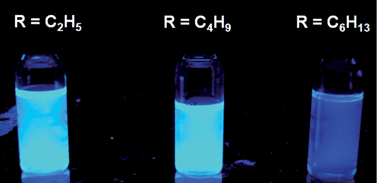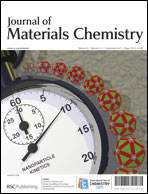Silicon-based nanomaterials are of far reaching interest because they can be biologically benign and highly photoluminescent. However if society is to make use of these properties efficient and predictable methods for preparing these materials must be realized. Here we report the syntheses of a series of sol–gel derived copolymers (i.e., [(HSiO1.5)0.95(RSiO1.5)0.5]n (where R = C2H5, C4H9, C6H13, C8H17, C10H21)) that yield silicon-based nanomaterials whose chemical composition and optical properties are strongly influenced by the nature of the R substituent. Freestanding nanomaterials were obtained through chemical etching of the resulting oxide matrices and some of these materials exhibited photoluminescence centered in the near-UV/visible spectral region. Composites and the etched materials were characterized using Fourier transform infrared spectroscopy (FT-IR), thermogravimetric analysis (TGA), X-ray powder diffraction (XRD) and X-ray photoelectron spectroscopy (XPS).
You have access to this article
 Please wait while we load your content...
Something went wrong. Try again?
Please wait while we load your content...
Something went wrong. Try again?


 Please wait while we load your content...
Please wait while we load your content...